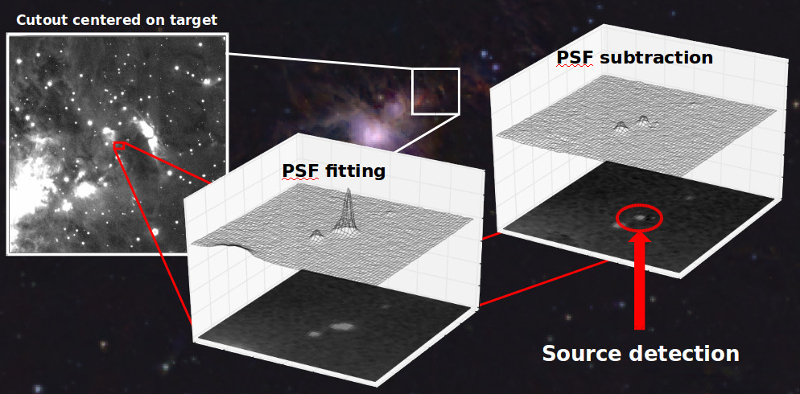
|
EPoS |
|
EPoS Contribution
|
|
Multiplicity Among 3500 Young Stellar Objects in Orion A
Christine Ackerl U Vienna, Vienna, AT | |
| While multiplicity among main sequence stars is already well established, this is not the case for Young Stellar Objects. There are various studies of young binaries that concentrate on relatively small populations in very distinct environments, like dense clusters or loose T-associations. Not surprisingly, the results of these studies are ambivalent and leave unanswered questions. For example: Whether and how does initial stellar multiplicity depend on environmental conditions? This fact is especially aggravating as the initial multiplicity properties of stars are the direct outcome of their formation process. Understanding multiplicity of YSOs should therefore be considered key to understanding star formation as a whole. In order to provide a more complete picture, a statistically significant sample of young binaries, that covers an entire star forming region with diverse physical conditions is needed. Using the Vienna Survey in Orion we are able to present the largest known sample of young visual binaries towards one single star forming cloud, the rich and nearby star forming region Orion A. The survey provides high-quality, sub-arcsecond, seeing limited ESO-VISTA images and JHKs-photometry for more than 800,000 stars and covers a vast range of different star forming environments, from well known dense clusters to isolated (Taurus-like) environments towards the Southern end of Orion A. Our sample is sensitive to separations > 300 AU and is about an order of magnitude larger when compared to previous studies. | |
 | |
| Caption: Companion detection | |
| Collaborators: M. Petr-Gotzens, ESO, DE S. Meingast, U Vienna, AT R. Koehler, U Vienna, AT J. Alves, U Vienna, AT J. Grossschedl, U Vienna, AT K. Kubiak, U Vienna, AT |
Suggested Session:
Multiplicity |